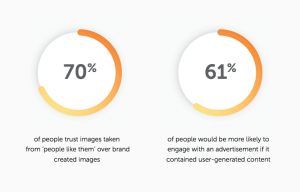American mothers are facing an existential crisis. There have never been more of us, yet it doesn’t feel like it’s any easier. There are also nearly 44 million caregivers in this country—a disproportionate number of them women (75%). The tune of their free labor? $470 billion each year, a sobering figure only expected to grow as our boomer parents continue aging.?
The unique challenges faced by caregivers and working mothers in the typically fast-paced corporate environment are more apparent than ever. Even the most forward-thinking human resources department armed with an arsenal of benefits and perks isn’t cutting it. Employees are yearning for more—more flexibility, more compassion, and more care from their direct managers.
As if this didn’t feel bleak enough, we’re also battling a mental health crisis, particularly for those caring for small children, aging loved ones, and anyone other than themselves.
For almost 70% of people, their manager has more impact on their mental health than their therapist or physician and the same impact as their partner, a study by the Workforce Institute found—and those same workers want more help.
The challenge for leaders is finding ways to meet the critical need for a supportive corporate culture that values and respects caregivers.
I am encouraged by the onslaught of female-led visionary organizations working towards a solution. Lumo Leadership offers coaching services to companies looking to do better by their working parents. MilkMate is working to remove the stigma (and burden) of breastfeeding in the workplace.
Three in four moms say that their company could be doing more to support working parents. So, what’s a leader to do? When it comes to leading teams, consider the perspective of your employee. Are they juggling multiple priorities outside of their role within your org? Consider they may have worked on a costume until the wee hours of the morning, so that their child could participate in a parade today. Perhaps they’re dashing out of work right at 5 o’clock to go care for an elderly parent. Perhaps they’re taking PTO to sit in the waiting room while their loved one receives chemo treatment. The complexities of balancing professional responsibilities in addition to those outside of the office are becoming insurmountable and it’s on us as leaders to support our people as best we can.??
Foster an environment of trust
Foundational to any successful team, leaders must curate teams they trust—plain and simple. In turn, demonstrating authenticity and vulnerability as a leader is paramount for setting the tone in a supportive work environment.?
Flexibility is the new currency
With over half of U.S. workers juggling caregiving responsibilities outside of work, we’d be remiss not to underscore the importance of flexibility. Leaders should, to the best of their abilities, create safe spaces for team members to bring their whole selves to work, acknowledging the unique challenges faced by caregivers and parents alike.?
Emphasize outcomes versus outputs
Simply put, it’s a strategy that measures the success of processes and projects versus the micromanagement philosophies that result in disgruntled team members, poor culture, and regrettable turnover. We as leaders are responsible for setting clear and actionable expectations where team members have a strong comprehension of their key performance indicators and feel set up for success.?
Kindness reigns supreme
Those who lead with empathy and kindness teach others what treatment will and will not be tolerated within an organization. Not only does this approach enhance the overall employee experience but fosters commitment cross-functionally and establishes a positive workplace culture that can dramatically improve the mental health and well-being of caregivers and working parents. Don’t let another function’s fire drill become your team’s emergency. Don’t place unrealistic expectations or deadlines unless necessary. Extend compassion and recognize the outsized impact you have on the lives of those you lead.?
And when you get it wrong, learn to repair. The reality is, we’re not always going to get it right. We’re leaders, yes. But we’re human, too. And what do I do when I inevitably yell at my 4-year-old for hitting his sister and stealing her beloved Barbie? I get good at repair. I admit my wrongdoing and apologize. And I mean it.?
In today’s complicated landscape, we must as leaders take our position and the subsequent responsibility seriously. We need to recognize that once we embrace a flexible mindset, build trust with our team members, lead with empathy and vulnerability, and shift our focus towards outcomes delivered, we can continue to create a culture that not only support the diverse needs of our workforce but also propel them toward sustained success. As working conditions within corporate institutions evolve, the path forward is clear: a more compassionate and understanding approach to leadership benefits everyone.
The instability as it relates to family policy in America is far from settled, despite recent headways pertaining to paid leave reform and conversations around the impending childcare cliff. It’s also far from easy to drive company-wide reform—as an executive I know that better than most. However, as a mother to two small children and an only child to two aging parents, I know it’s needed more than ever.
Together as leaders (and humans), let’s not let the undeniable rally cry we’re witnessing in the form of burnout and resignations be ignored.
(18)
Report Post







